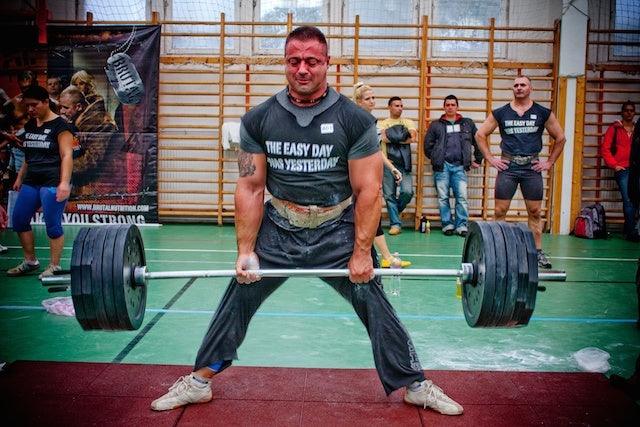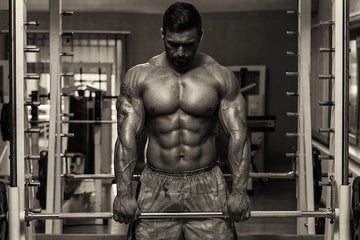

Heavy or Moderate Exercise: Which Build More Mass
Table of Contents
Heavy or Moderate Exercise: Which Build More Mass
by: Robbie Durand
In Ronnie Coleman’s Unbelievable DVD, he was 5.5 weeks out from the Olympia and this was his deadlift workout. 1st Set: 245 for 10 reps. 2nd Set: 445 for 6. 3rd Set: 645 for 5. 4th SET: 755 for 4. 5th Set: 805 for 2. This is just about one of the most incredible feats of strength ever performed by a dieting bodybuilder. Dorian Yates was also an advocate of high intensity training for packing on muscle mass as seen in his Blood and Guts training video. A new study suggests that intensity of exercise is the key to stimulating anabolic growth factors in muscle.
Researchers recently investigated the effect of resistance exercise intensity and exercise-induced metabolic stress on the activation of anabolic signaling and expression of myogenic genes in skeletal muscle. Ten strength-trained athletes performed three different types of protocols:
-high-intensity (74% of 1-repetition maximum (RM)]
-moderate-intensity (MI, 54% 1RM)
-or moderate-intensity no-relaxation exercise(54% 1RM). (Continuous tension on muscle with no relaxation between the concentric and eccentric contraction).
Muscle gene expression in muscle samples were evaluated before, 45 min, 5 h, and 20 h after exercise in all the groups. The lactate concentration in middle intensity was approximately 2-fold lower than high intensity and middle intensity no relaxation exercise, and was highest in moderate intensity no relaxation. One marker of skeletal muscle hypertrophy, i.e. ERK-1/2 (linked to protein synthesis) did not depend on exercise intensity and was thus identical for the similarly stressing moderate-intensity no-relaxation exercise and high intensity trials. Over the course of the 24-study period, however, the high intensity trial yielded distinctively more pronounced anabolic effects than the moderate and moderate intensity no relaxation protocol. A more pronounced and sustained elevation of markers of anabolism such as p21, a maximal increase in MyoD, a marker of satellite cell (muscle precursor cell) activity, a significantly more pronounced increase in MGF (mechano growth factor) and, last but not least, a sustained reduction in myostatin occurred with high intensity training. The researchers found that there was a significant increase (by 2 times) in mechano-growth factor mRNA expression at 22 hours post-exercise after the heavy load condition but not after the moderate-no- relaxation or heavy load conditions. They noted that there was a significant reduction in myostatin mRNA expression 22 hours post-exercise after both heavy load (by 20 times) and moderate-no-relaxation (by 6 times) conditions. So based on increases in the anabolic molecular pathway MGF being increased and a decrease in myostatin with high intensity exercise, it seems that the high intensity workouts of Ronnie and Dorian were conducive to stimulating muscle growth pathways. So if you not going high intensity in the gym, you are shorting yourself on gains in muscle.
Popov DV, Lysenko EA, Bachinin AV, Miller TF, Kurochkina NS, Kravchenko IV, Furalyov VA, Vinogradova OL. Influence of resistance exercise intensity and metabolic stress on anabolic signaling and expression of myogenic genes in skeletal muscle. Muscle Nerve. 2014 Jun 11.
MUSCLE MEDIA MAGAZINE FOR MEN
The premier source of training, nutrition, supplements, fat loss and health for men.

















